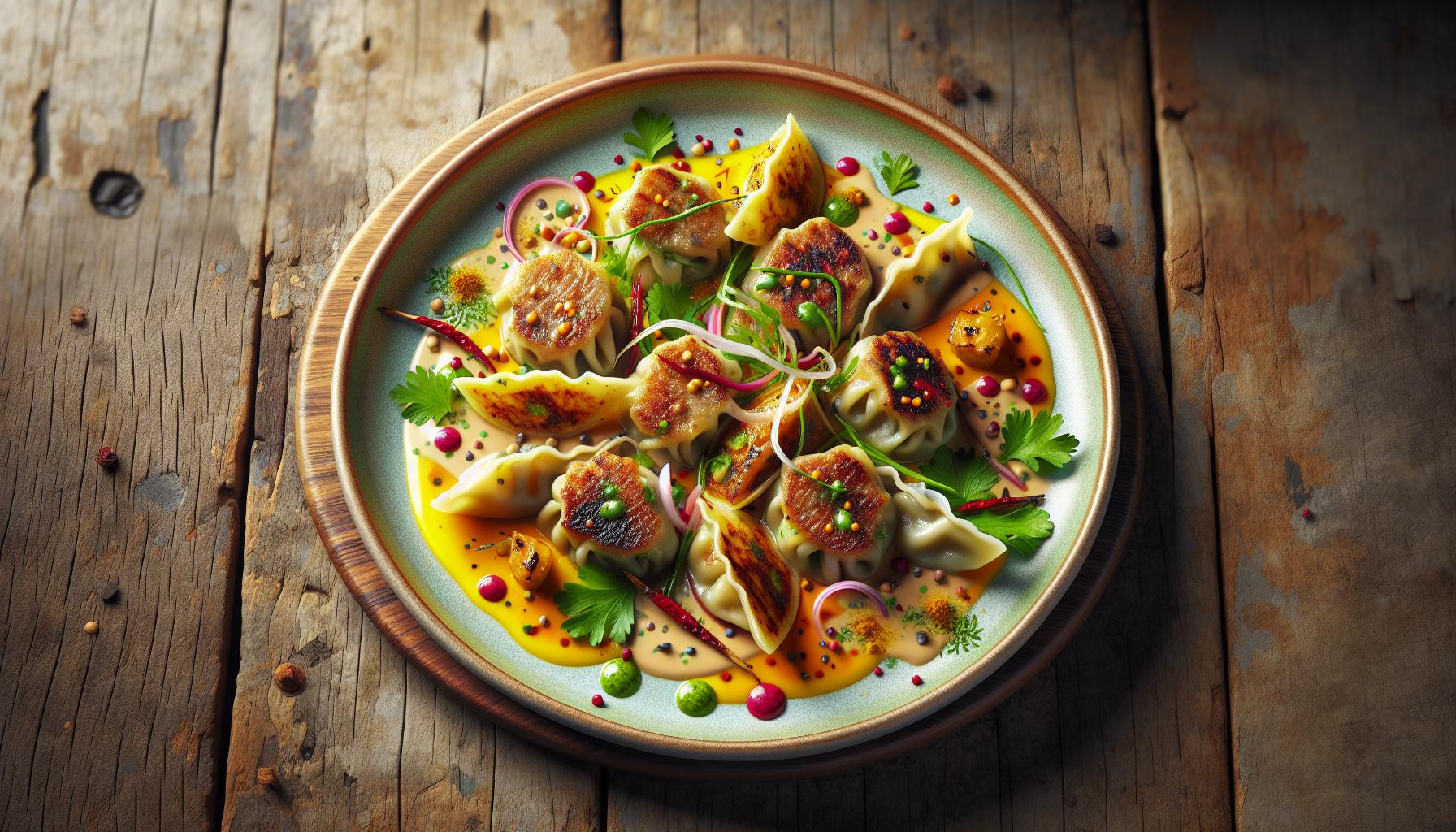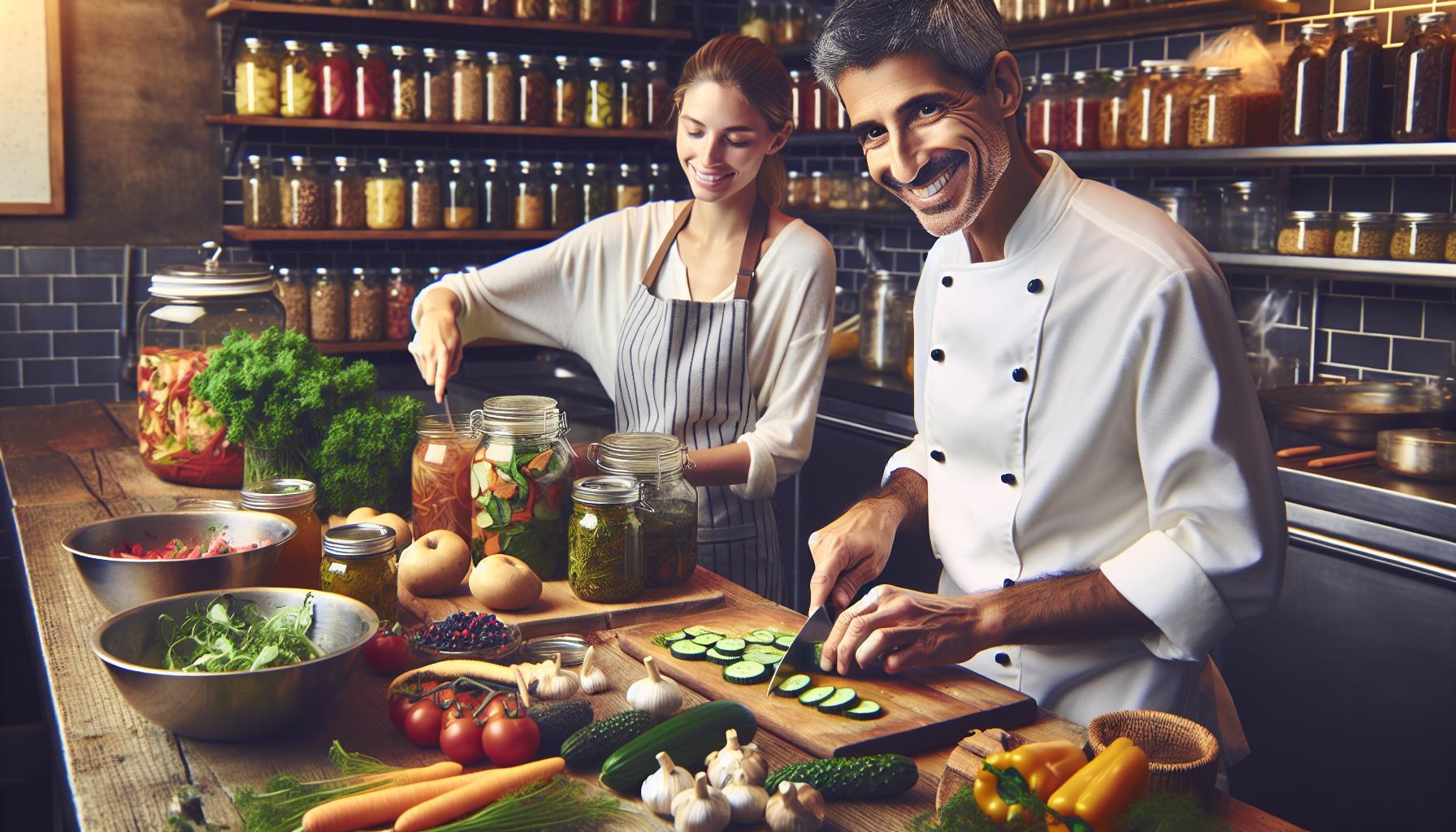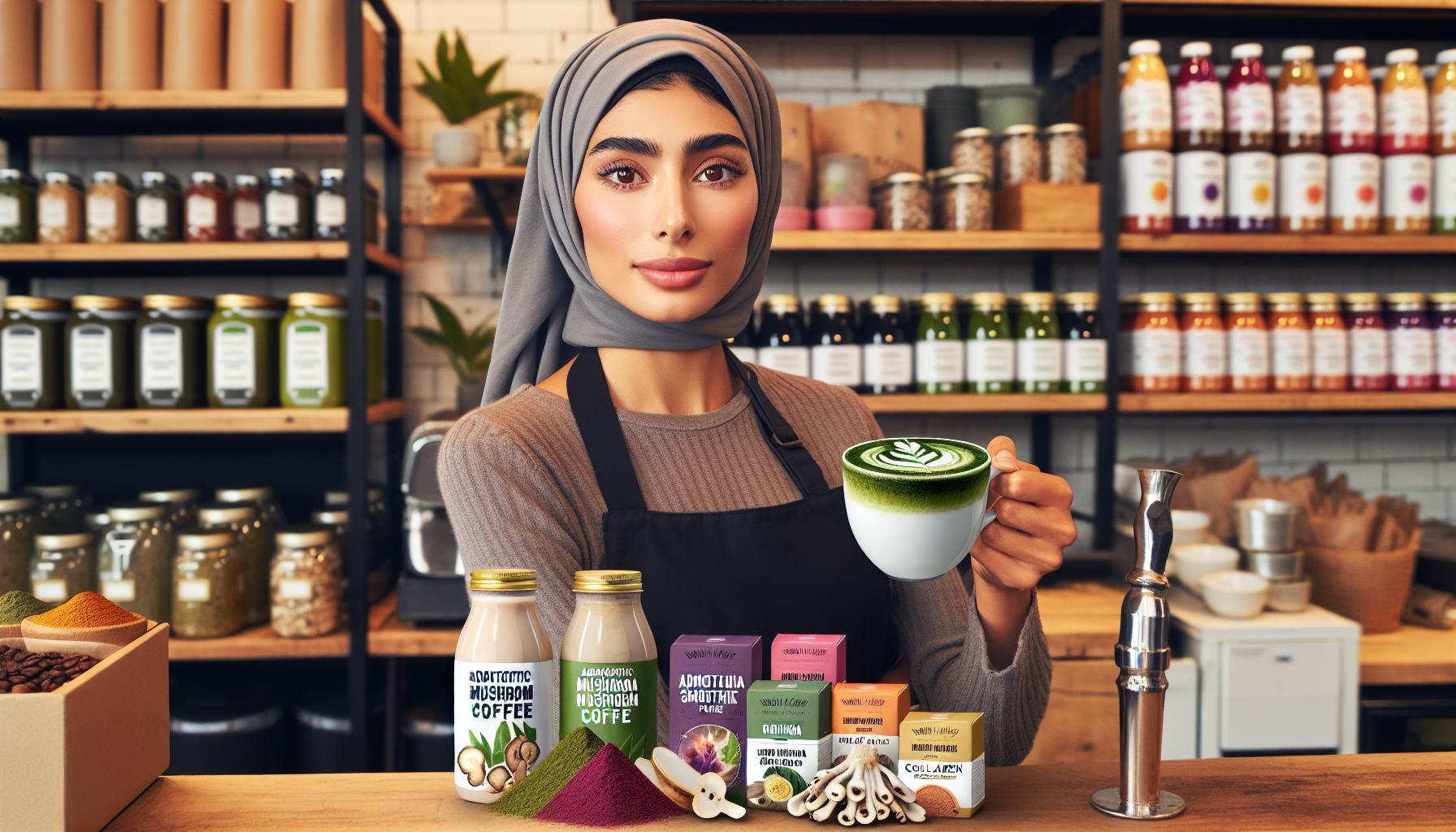New Food Trends 2024 are taking an unexpected turn as health-conscious consumers and social media continue to shape what ends up on our plates. From AI-generated recipes to climate-friendly cuisine the culinary world is evolving faster than you can say “TikTok food challenge.”
This year’s food scene is all about blending innovation with sustainability. Plant-based proteins are getting a luxurious makeover while regenerative agriculture is making its way from farm to table. And let’s not forget about the rise of “functional foods” – because apparently eating just for taste is so 2023. These emerging trends aren’t just passing fads; they’re reshaping how people think about and interact with their food choices.
New Food Trends 2024
The New Food Trends 2024 with groundbreaking innovations and sustainable practices. These emerging trends reflect a sophisticated fusion of technology and conscious consumption.
Plant-Based Evolution
Plant-based proteins advance beyond simple meat alternatives to create complex culinary experiences. Innovative companies leverage mushroom mycelium fermentation to produce protein-rich ingredients with authentic meaty textures. Lab-cultured dairy proteins create premium cheeses indistinguishable from traditional varieties, while precision fermentation enables the production of bioidentical egg proteins. Advanced food processing techniques transform jackfruit, banana blossoms, and king oyster mushrooms into gourmet seafood alternatives. International cuisines inspire new plant-based creations, incorporating traditional fermentation methods from Korean kimchi to Japanese koji.
AI-Powered Food Technology
Artificial intelligence revolutionizes food production through smart kitchen appliances and personalized nutrition platforms. Robotic systems optimize restaurant operations by automating food preparation, reducing waste by 40%. AI algorithms analyze individual dietary preferences, health data, and genetic information to generate customized meal plans. Computer vision technology monitors food freshness in smart refrigerators, sending real-time alerts to prevent spoilage. Machine learning systems enhance vertical farming operations by controlling growth parameters for optimal yield. Advanced AI applications enable precise flavor matching, creating plant-based alternatives that replicate specific taste profiles with 95% accuracy.
Global Fusion Cuisine Taking Center Stage

Cultural boundaries blur in 2024’s culinary landscape as chefs combine diverse cooking traditions to create innovative flavor profiles. Traditional recipes transform through cross-cultural ingredient combinations while maintaining authenticity.
Modern Mediterranean Meets Asian
Mediterranean cuisine integrates Asian cooking techniques creating distinctive flavor combinations. Tahini blends with miso in contemporary dressings while za’atar seasons ramen bowls. Restaurants pair Greek tzatziki with Korean gochujang creating bold Mediterranean-Asian sauces. Ingredients like sumac combine with yuzu in marinades for grilled proteins while pomegranate molasses enhances stir-fries. Leading restaurants incorporate saffron into dumplings filled with lamb creating memorable fusion experiences.
African Flavor Influences
African spice blends emerge as key ingredients in global fusion dishes. Berbere seasoning flavors plant-based proteins while suya spice elevates grilled vegetables. Restaurants incorporate African supergrains like fonio teff into fusion bowls paired with international ingredients. Moroccan chermoula sauce adds depth to Asian-inspired seafood dishes while Ethiopian berbere spices complement Mediterranean flatbreads. Leading chefs feature South African chakalaka relish as a vibrant topping for fusion tacos enhancing traditional recipes with bold African flavors.
Sustainable and Regenerative Food Practices

Sustainable food practices prioritize environmental stewardship through conscious production methods. Regenerative agriculture emerges as a cornerstone of food sustainability, focusing on soil health restoration while reducing carbon emissions.
Zero-Waste Cooking Methods
Food establishments embrace nose-to-tail cooking practices, utilizing entire ingredients from root to stem. Chefs transform vegetable scraps into flavorful broths, fruit peels into dehydrated garnishes, and meat trimmings into charcuterie. Restaurant kitchens incorporate fermentation techniques to preserve excess produce, creating kimchi, kombucha, and pickled vegetables. Digital inventory management systems track ingredient usage, reducing overordering and food spoilage. Composting programs convert unavoidable food waste into nutrient-rich soil for local farms, completing the circular food economy.
Climate-Friendly Menu Options
Restaurants showcase carbon footprint labels on menus, enabling informed dining choices. Seasonal ingredients sourced within 50 miles minimize transportation emissions while supporting local farmers. Plant-forward dishes occupy 70% of menu space, featuring regeneratively grown grains like kernza and sorghum. Precision fermentation creates dairy alternatives using 98% less water than traditional production methods. Vertical farming partnerships provide fresh microgreens year-round, reducing water usage by 95% compared to conventional farming. Restaurants integrate indigenous farming practices, incorporating drought-resistant crops like amaranth and quinoa.
Health-Focused Food Innovations

Health-conscious consumers drive the development of innovative food products that enhance physical performance mental clarity. Advanced nutritional science combines with culinary creativity to create foods that deliver specific health benefits.
Functional Ingredients
Adaptogenic mushrooms transform everyday beverages into cognitive enhancers, with lions mane coffee blends gaining popularity in cafes. Moringa-infused smoothie powders provide complete protein profiles plus 90+ nutrients. Marine collagen peptides appear in ready-to-drink beverages for skin health support. Prebiotic fiber supplements derived from chicory root integrate seamlessly into baked goods. Traditional healing herbs like ashwagandha turmeric feature in functional seasoning blends. Food manufacturers incorporate these bioactive compounds through specialized extraction processes that preserve nutrient integrity.
Mental Wellness Foods
L-theanine rich matcha lattes promote focused calm without jitters. Omega-3 enhanced eggs contain DHA EPA for cognitive function support. Dark chocolate bars infused with medicinal mushrooms target stress reduction. Probiotic-rich fermented foods like kimchi kefir support gut-brain health. Nootropic beverage blends feature cognition-boosting ingredients like bacopa rhodiola. CBD-infused snacks provide anxiety relief through precisely dosed servings. Ancient grains like quinoa amaranth deliver sustained energy through complex carbohydrates amino acids. Manufacturers prioritize third-party testing to verify the potency bioavailability of these compounds.
Social Media’s Impact on Food Culture
Social media platforms shape modern food trends through viral content creation. Digital influence transforms traditional dining experiences into shareable moments that generate millions of views across platforms.
TikTok-Inspired Dishes
TikTok food trends generate over 25 billion views monthly through creative recipe sharing. Viral recipes like cloud bread garner 3.4 billion views while butter boards accumulate 2.1 billion impressions. Food creators leverage quick-format videos to showcase:
- Aesthetic Presentations: Colorful pasta dishes featuring butterfly pea powder attract 890 million views
- Kitchen Hacks: Three-ingredient recipes reach 1.2 billion engagements
- Fusion Creations: Korean corn dogs with mozzar pulls achieve 567 million likes
- Food Challenges: Competitors recreate trending recipes generating 745 million shares
Here’s the current trending data for TikTok food content:
| Trend Category | Monthly Views (Billions) | Engagement Rate |
|---|---|---|
| Recipe Hacks | 8.2 | 12.4% |
| Plating Art | 6.5 | 15.7% |
| Food Reviews | 5.8 | 9.3% |
| Cooking Tips | 4.5 | 11.2% |
Content creators transform basic ingredients into visually appealing dishes through innovative techniques perfect for short-form video sharing.
Digital Dining Experiences
Digital technology transforms traditional dining into interactive culinary adventures through innovative platforms and virtual experiences. Smart ordering systems connect diners with multiple restaurants through unified interfaces.
Virtual Food Halls
Virtual food halls revolutionize food delivery by housing multiple restaurant concepts under one digital roof. Online platforms enable customers to order dishes from different restaurants in a single transaction, eliminating multiple delivery fees. Cloud kitchens support these digital marketplaces by operating dedicated cooking spaces for delivery-only brands. Major platforms like DoorDash integrate virtual food hall features, allowing customers to mix items from 4-6 different restaurants in one order. Analytics tools track customer preferences across various cuisines, optimizing menu offerings based on real-time data. Restaurant operators reduce overhead costs by sharing kitchen equipment and delivery infrastructure. Digital payment systems streamline transactions while loyalty programs encourage repeat customers through personalized rewards. Mobile apps display real-time order tracking with estimated delivery times for each dish from different vendors.
Food Landscape
New Food Trends 2024 reflects a remarkable fusion of technology innovation and conscious consumption. As consumers prioritize both personal wellness and environmental responsibility the industry continues to evolve with groundbreaking solutions. From AI-powered kitchens to regenerative agriculture these changes aren’t just trends – they’re reshaping how we think about and interact with food.
The future of food is clearly headed toward a more sustainable digitally integrated and health-focused direction. This transformation promises to deliver not just better-tasting meals but also a more responsible and connected culinary experience for everyone.

